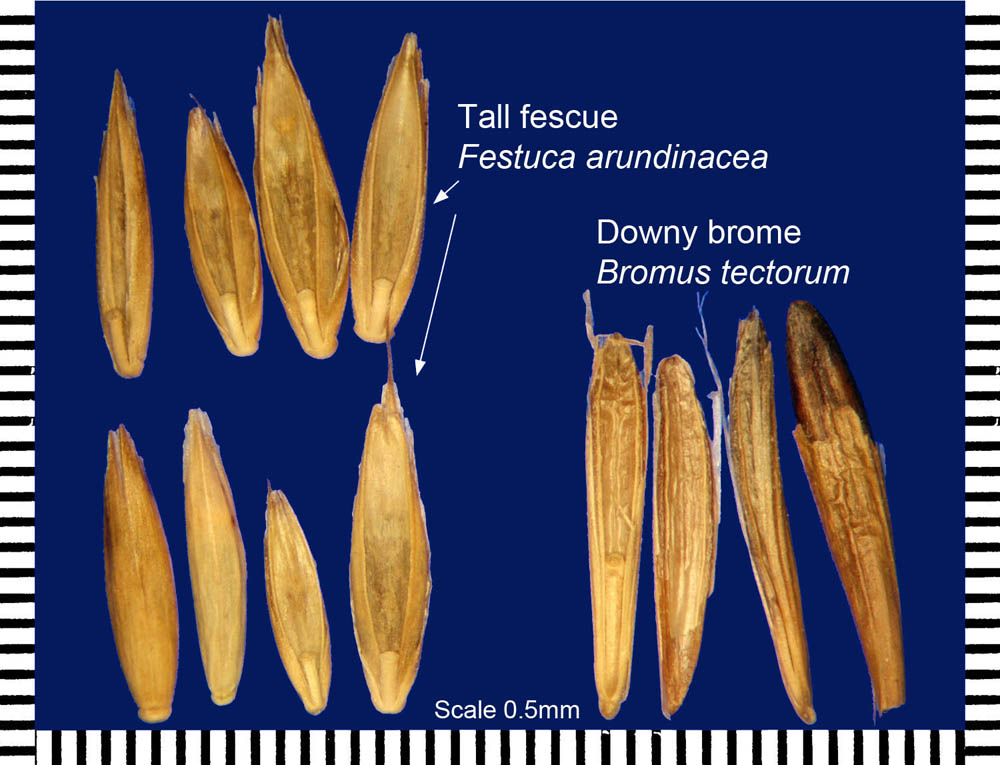
In the past, when the lab reported undesirable seeds, some customers called us and asked what the seed looked like. We learned that you could spend hours on the phone trying to describe the seed and still not communicate its key features. Sometimes the lab would ask the caller to come by in person to see the specific seeds found in their sample, only to realize that the customer was five hundred miles away! We realized it was time to help our customers in a new way by providing an image conveying these key features.
To be of value, the image has to represent the seeds that are present in the sample that is being examined. While the seed images in books or the specimens found in seed collections are very useful for seed identification, they do not represent the exact and specific conditions and features of the seeds found in samples. Seeds are biological products which can vary from sample to sample for many reasons, which is why the image has to represent the individual sample.
Since its initial experimental use, we have made many images for a range of clients. Some may be planning their cleaning process, others may be trying to figure out how to re-clean and still others may simply want to know what is present in a specific handful or seed collection. The variation from image to image is a testimony to the specificity of each situation.
Figures 2 and 3 show a single kind of contaminant with clear physical differences between the crop seed and the undesirable seed. Each image includes a scale to interpret size, shape and other differences. Note that there are several seeds of the crop species to illustrate the range of seed sizes. These features can help the user to decide if, or how, these seeds can be separated.

Figure 2. Wild carrot seeds found in a red fescue sample.
The contaminant seems very different in surface texture and length but has similar width to the crop seeds.

Figure 3. Rough hawkbit found in a creeping bentgrass sample.
The great difference in length between the two species means that this separation should be quite easy and result in very little loss of bentgrass seed.
Figure 4 illustrates a situation where there is very little difference between the crop seed and the undesirable material, and mechanical separation is likely impossible. By seeing this image a grower may realize the value of contaminant prevention in the field.

Figure 4. Downy brome found in a sample of tall fescue.
It is likely that even with the best equipment these seeds cannot be separated.
Figure 5 illustrates a variety of cleaning challenges. An image like this one can help a cleaner and grower to communicate and plan preventive and corrective measures. Good communication and planning of specific actions simply based on words would be difficult. An image like this solves that problem.

Figure 5. Multiple contaminants found in a white clover sample.
Although it may be possible, based on size and shape, to clean out the red clover and buckhorn plantain, it will be almost impossible to clean out the sheep sorrel and alsike clover.
Figure 6 illustrates a different situation where the customer may want to see all the seeds present in the sample, or perhaps wants to show a diversity of seed kinds present in a collection, a natural stand, or re-vegetation project.

Figure 6. Variety of crops and weeds present in a Shasta daisy sample.
The OSU Seed Lab creates custom digital images according to each customer’s specific request. Often, customers request to see specific contaminants alongside the crop. As illustrated by the examples, many types of images are possible. Turnaround time is typically 1-2 business days, and images are delivered by email or fax. Emailed images are sent in the common JPEG format and sized to view on a monitor or print as a full-size page.
The fee is based on the hourly charge, with a $31.00 minimum per image. Most one- and two-species images can be done without additional charges. Please use the Additional Tests Order form to request this service, specify Digital Image as the test and indicate in the comments what you want in the image (typically, the contaminant and the crop are both included for comparison).